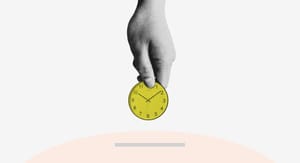Every startup or business ultimately aims to turn a profit by providing a product or service with a higher value than the costs to deliver it. Whether you are planning to start a new venture or currently running one, it’s important to understand the unit economics of your business.
Unit economics is defined as the direct revenues and costs associated with a particular business model expressed on a per unit basis.
Understanding the unit economics of your business provide a way to measure its profitability. So let’s start by identifying the unit for your business. If you are selling a product like a glass of lemonade 🍋, that would be the unit. For those providing a service, the unit would be the customer or client.

Let’s assume you plan to start a lemonade stand to make some quick cash. The unit here would be the glass of lemonade you are selling to thirsty pedestrians.
Product example: A lemonade stand
Unit = A glass of lemonade
Revenue per unit = $1 (Price for a glass of lemonade)
Variable Cost = $0.50 Ingredients (lemon, water, glass), Marketing brochure
Contribution margin = $1 — $0.50 = $0.50
Contribution margin shows you the aggregate amount of revenue available after variable costs to cover fixed expenses and provide profit to the company
Using the contribution margin above, you can then calculate the minimum glasses of lemonade to break even and turn a profit. This is known as the break-even point.
Break-even point is the production level where total revenue equals total costs and expenses. Beyond this point is when a business starts to be profitable.
List of fixed monthly costs
Stall rental = $50
Salary = $100
Total fixed costs = $50 + $100 = $150
Break-even point = $150 / $0.50 = 300 unit
For your lemonade stand to start turning a profit, you need to sell more than 300 glasses of lemonade in a month. To further improve profitability, you can leverage economy of scale by starting multiple lemonade stalls to purchase lemons at a discounted price, lowering your variable cost for each unit.
In microeconomics, economies of scale are the cost advantages that enterprises obtain due to their scale of operation, with cost per unit of output decreasing with increasing scale
Real life application (In Reverse)
You can also use this method to determine the price of your product. Back in college, I was in charged of the Nasi Lemak stall at the food fair.

Sales wasn’t great and with a few hours left, I needed to at least break-even. Thankfully Nasi Lemak have a good margin so I could offer a buy 1 free 1 deal. This is effectively a 50% discount but you have to buy at least 2 packets.
Rough numbers to illustrate the example. (it’s been a while)
100 packets cost at $250, $2.50 per packet
Initial price at $5 ($2.50 margin, stall is free)
Sold 20 packets x $5 = $100
Minimum price to break-even
($250 — $100) / (100–20) = $1.875
Buy 1 free 1 deal at original price of $5
Sold the rest 80 packets x $2.50 = $200
Total revenue = $300
Obviously I was a bad at sales (till now), but at least I didn’t incur a loss and no Nasi Lemak was wasted.
Your Client is The unit
If you are running a service or subscription business, the unit economics will revolve around your customer or client. For these types of businesses, retaining a customer is important due to the high acquisition cost. But if you are able to keep them around, you will generate more future revenue from them.
Customer LifeTime Value (CLV) is a prediction of the net profit attributed to the entire future relationship with a customer.
To figure out how much a customer is worth to your business, we calculate the Customer LifeTime Value (CLV) by
CLV = Average Purchase Cost x Frequency of Purchase x Gross Margin
Note: This is a simplified formula to predict how much a customer would bring to the business. There are many predictive algorithms to get a more accurate CLV.
Next, we will calculate the cost of all the effort you put into acquiring a new customer for your business. This covers all your sales (commissions) and marketing (advertising) efforts including related overhead (salaries) and expenses.
Customer Acquisition Cost (CAC) is the cost associated in convincing a customer to buy a product/service.
CAC = Total Acquisition Spend / Number of Customers Acquired
Subscription Example: Software as a Service
Unit = A subscriber
Assuming subscription cost $30 per month, customer stays subscribed for a year on average with a gross margin of 50%
CLV = $30 x 12 x 50% = $180
Monthly expenses to acquire new customers
Ad spend = $500
Ad campaign design, copywriting = $50
Marketing tool subscription = $50
Customer acquired = 10
CAC = ($500 + $50 + $50) / 10 = $60
CLV:CAC ratio = $180:$60 = 3:1
Generally, a CLV:CAC ratio of 3:1 is considered good as it shows the business is able to grow and scale well. A low ratio would mean you are spending too much to acquire a customer while a high ratio indicate that you should consider spending more to grow faster.
To increase CLV, you will need to improve your retention and lower your churn rate. Simply put, you want your customer to stay for as long as possible.
Retention rate is the ratio of the number of retained customers to the number at risk. Churn is one minus the retention rate as a percentage (i.e. 1-R%). If 80% of your users returned from month 1 to month 2, you would have a churn of 20%
CLV:CAC ratio is similar to contribution margin in that it measures the profitability of the business. A subscription business is profitable and scalable when it’s able to spend money to acquire new customers while retaining them long enough to turn a profit.

Real Life Non-Application
When we launched our first subscription product years ago, we had no idea about our CLV or CAC. We looked at the business from the typical product approach.
We assumed that as long as we get a certain amount of customers at a profitable price we are good to go ignoring retention and the cost of acquire customers.
For those of you doing freelancing, you can also think of your business as a subscription service for your client. It’s a lot more profitable if you can keep your customer and continuously serve them instead of looking for new ones. The best customers are the ones you already have.
A recap on unit economics of your business
- Figure out your contribution margin by identifying the variable cost per unit for your product.
- With the contribution margin, you can calculate the break-even point for your business.
- For service and subscription businesses, your client or customer is the unit.
- Calculate the Customer LifeTime Value (CLV) to estimate the future worth of your customer.
- Track your Customer Acquisition Cost (CAC), which includes all sales & marketing efforts and expenses.
- Maintain a recommended CLV:CAC ratio of 3:1 to ensure you are not over-spending or under-investing on your acquisition efforts.
- Retention is the key to a healthy and profitable subscription business.
Hopefully these insights will serve as a starting point to evaluate the fundamentals of your business. Do remember to adapt them to your specific industry and continuously update them to maintain an accurate view of the profitability of your business.
For more elaborate and detailed examples, check out this article: Don’t Scale an Unprofitable Business: Why Unit Economics (Still) Matter
Image Credits
- Lemonade photo by Max Pixel
- Nasi Lemak photo by Faizal Zakaria from Pixabay
- Monopoly house on coins photo by Sabine Peters on Unsplash





Comments